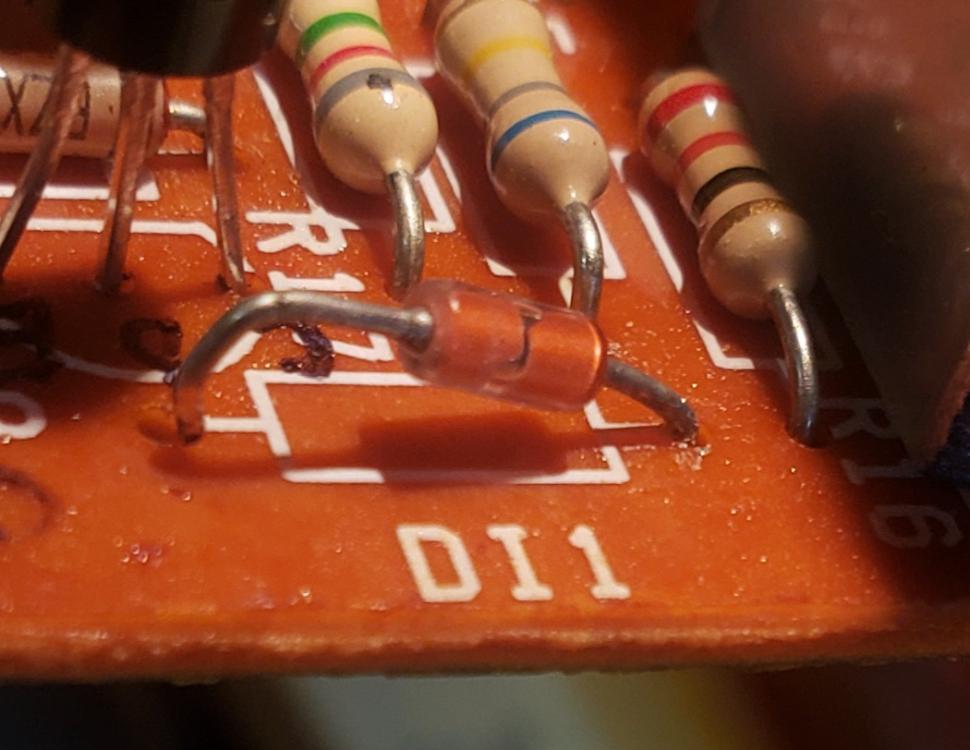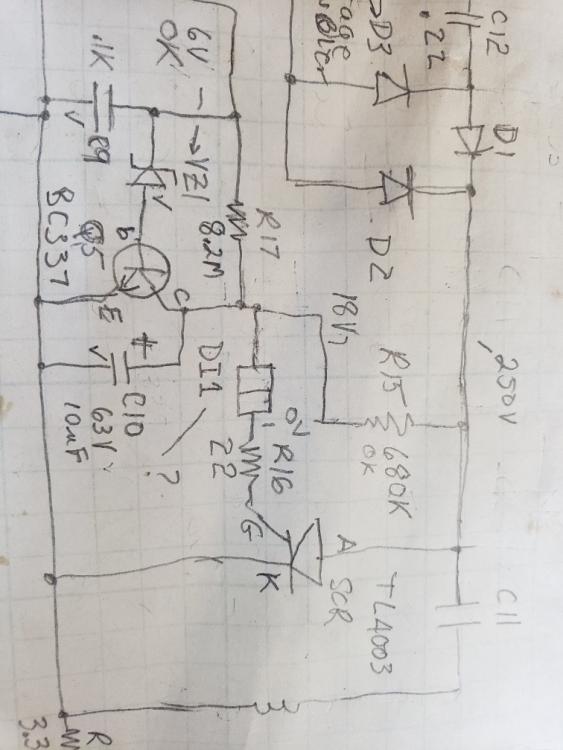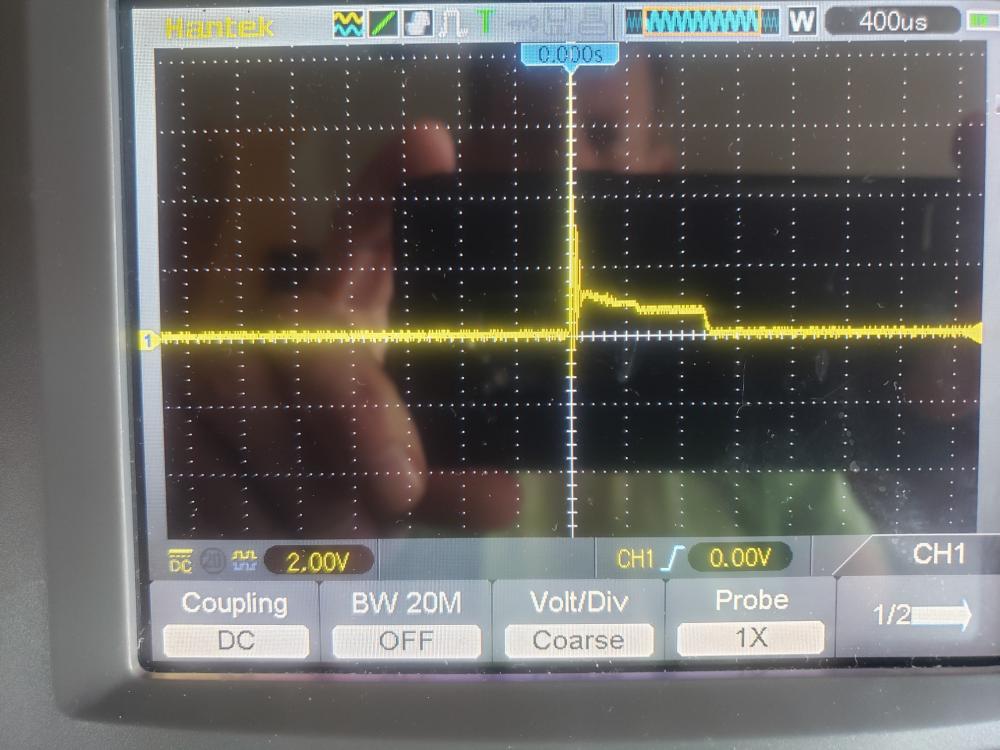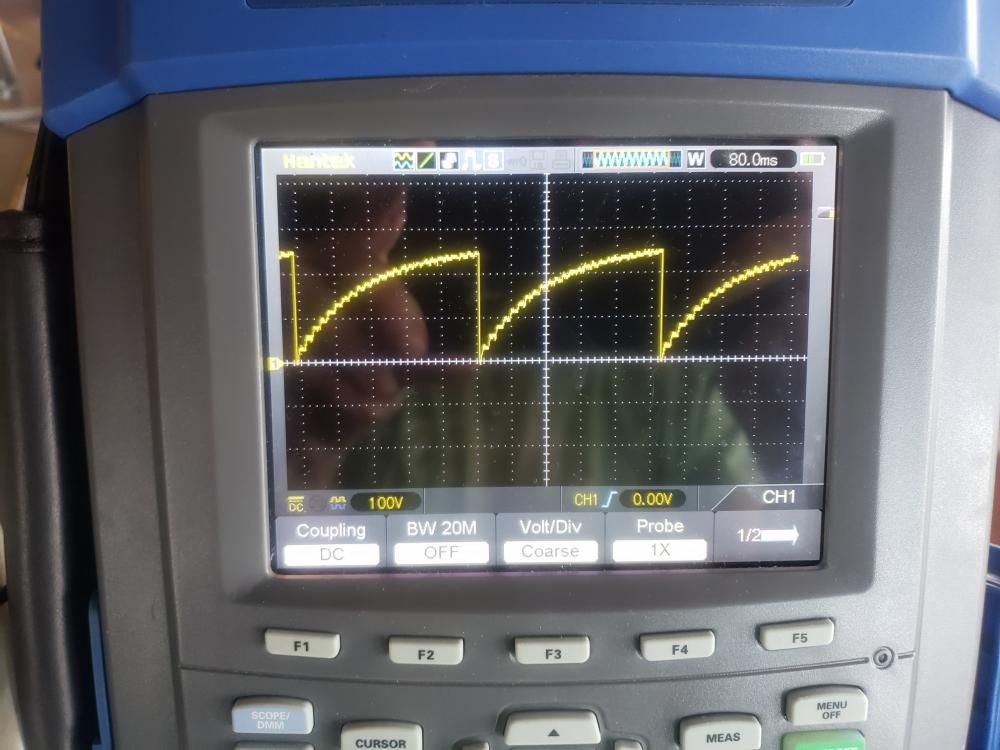I am troubleshooting a cooktop spark module. There is a component that looks like a small glass cased diode, but it isn't a diode. There is no band indicating cathode and when removed from the circuit, it measures open both directions. There are no markings on it whatsoever.
There are other diodes on the circuit board, but they are labeled as D1, D2, etc whereas this component is labeled DI1. In the circuit, it is series with a 22 ohm resistor before going to the gate of an SCR.
It is not burned out because the circuit works fine for a while, before the transistor than fires the SCR fails.
Thanks for any ideas!
Tom

This is called a DIAC. Thats why the identifier is DI. It is used to trigger TRIAC. It is a bidirectional device and the multimeter will act as an open circuit while connecting across a diac. change the multimeter polarity across the diac whether it is showing open circuit in both cases. If the multimeter is showing any reading in any direction it is faulty and needs replacement.
Here is a crude schematic that I derived from the circuit board (sorry about the orientation, I rotated it before uploading, but it won't display properly here no matter what I do). DI1 is in the center. If it is a DIAC that sounds right since it measures open circuit in both directions and the "DI" board identifer makes sense. But what purpose does it serve in the circuit going to the gate of the SCR?

The purpose of DIAC is to fire a TRIAC. It is widely used in such applications where triggering an SCR or TRIAC is troublesome as TRIAC requires very narrow turned on steps.
However, DIAC is also a good choice for not only to control the SCR or TRIAC but to turn it off as well.
Thanks so much, Sourav. That brings up another question. The following waveform was measured at the gate of the SCR. The circuit fires the SCR at about 0.5Hz for the spark. There is a delay after the peak which varies in duration. Sometimes it is 1000 usec as shown below, and sometimes it is 3 times longer. Does that indicate a bad DIAC, or possibly something else?
The real question, and why I'm trying to understand this circuit, is why is Q5 failing every few days? I checked all the components surrounding Q5 and they seem good. The cooktop has never given a problem before this.
Tom

Well, It is quite difficult to say what will be the delay time to fire up the SCR, because the partnumber of the DIAC is unknown. My best guess is the load across the SCR is turning on in the wrong phase of the AC swing which end up heat dissipation and poor delay or conducting time.
It may happen due to a faulty DIAC or due to a faulty load which is highly capacitive or inductive during the startup phase.
You could change the DIAC, but for that you need a partnumber.
Also, The oscope is showing ringing osctillation which indicates high inductance across the SCR or due to the DIAC leakage inductance which generally does not happen.
I was looking at this as a DC circuit since the capacitor (C11) is charged and discharged every half second or so (see screenshot). It is discharged through the SCR and that is the reason for being highly inductive. Can current out flow from the gate of the SCR? I'm just an EE wannabe, but I thought the SCR sinks current through the gate. But if that's the case, why even use a diac (or a diode for that matter)?
I would change the diac, but unfortunately, there are no markings. As I said, the circuit works for sometimes a week or more until Q5 fails. Looking at available diacs from Mouser.com, there are only 3 available breakover voltages so I could try each one, but there are 5 different breakover currents. Could I deduce the apprpriate value from the SCR spec sheet?

One of my comments above was not clear. The capacitor C11 is discharged through a coil (for spark generation) when SCR closes. That's why it is inductive, not because it is discharged through the SCR. Sorry for the confusion.
The DIAC is doing its job. The DIAC is used because it let a capacitor to charge and provide high current to control a SCR or TRIAC. Without DIAC it will became much more complex where a single component like DIAC do the Job. There must be other problem. Check the heat dissipation of the SCR or TRIAC. I hope it is much higher.
Thanks I'm begging to understand the circuit:-). So the DIAC allows C10 to charge when Q5 turns off? And when C10 reaches the threshold of the DIAC, it fires the SCR?
The SCR has no heat sink, and is working fine (I replaced it anyway to be sure). If C10 was leaky, could that cause Q5 to fail often?
In reply to Thanks I'm begging to by Thomas Smith
Yes.
It may or may not. Depends on at what position the TRIAC or SCR is getting fireup. I will advice you to add a heatsink first. It is common to use a heatsink as it heatup often.
Do you mean a heatsink on the SCR or transisitor? It is the transistor that is failing.
Thanks, will try that. For my own edification, why the 2n2222a? It seems to have similar voltage ratings and lower current ratings than the BC337. Also, don't think I mentioned it, but Q5 fails sometimes after one cycle (spark) while at other times I can shut the gas off and it will work fine for five minutes or more, providing continuous sparks.
I am extremly sorry. Do not use 2N2222A use BC639. It has higher collector current and high voltage tolarences. So it will overcome the flactuating measures that creating problem for BC337. It may work, may not work but cost a very small amount more than BC337. Thus why not to make a try?
I just ordered 10 BC339-16 (the -16 has even higher voltage rating). Will come from Taiwan so will be a while.
Thanks!
Tom


Debashis Das
Joined December 02, 2019 117Monday at 10:02 PM
It may be a bidirectional TVS diode. it could be faulty though. if you can chalkout a rough circuit diagram then it would be easy to understand